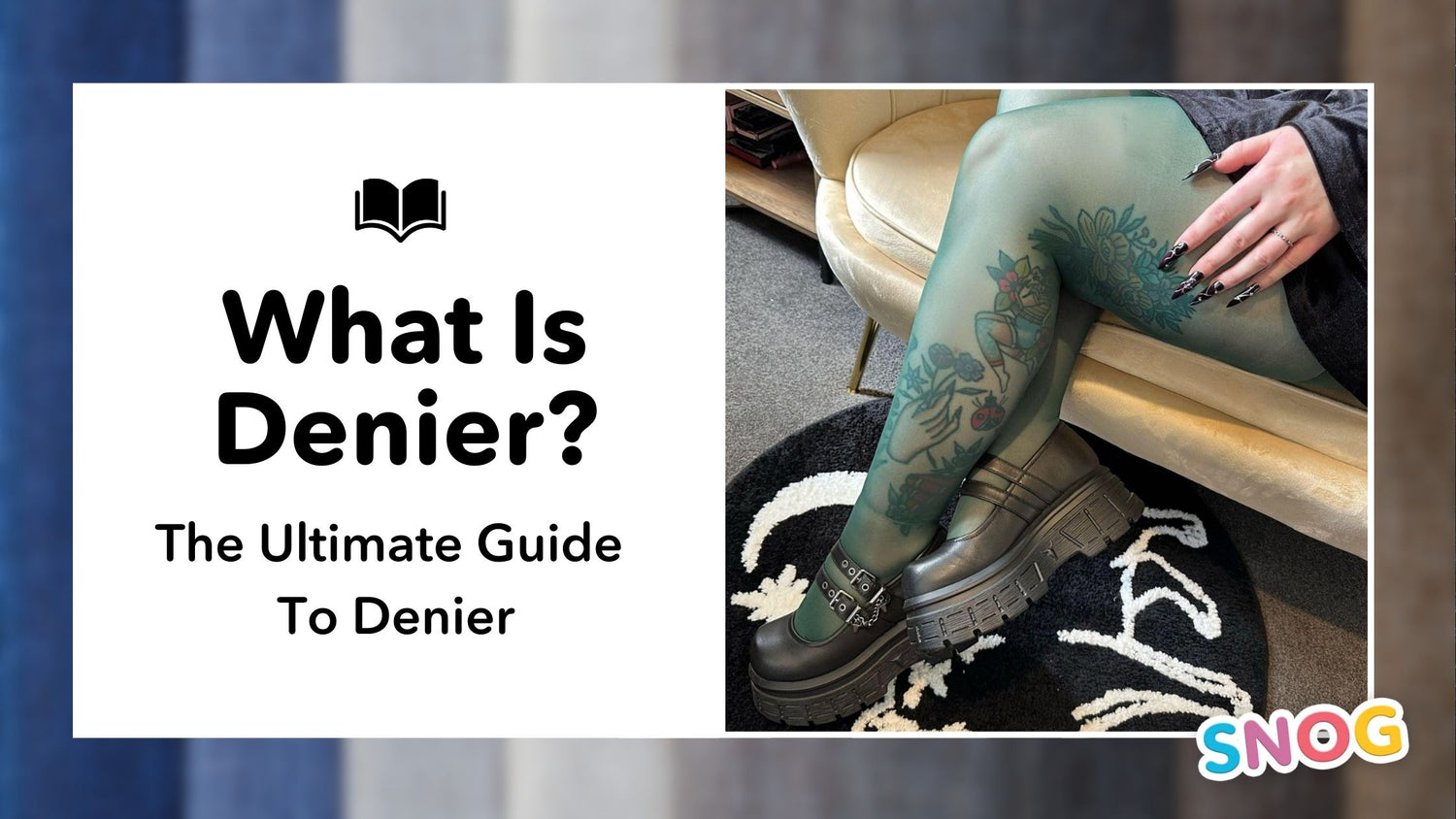Denier describes the weight of fibres used in textiles, clothes and hosiery, like tights. It is simply a unit of measurement that is used in different industries.
Ever stumbled upon the term 'denier' while shopping for clothes? Have you found yourself wondering what it means and why it's important? Fret not, because we're here to unravel the mystery behind denier and its significance in the world of fashion. Let's explore what denier is, its applications, and how to choose the right denier for different types of clothing.
What Does Denier Mean?
As we mentioned, denier is a unit of measurement used to describe the weight of fibres, specifically in textiles and hosiery, like tights. It determines the density of a material by assessing the mass (in grams) per 9,000 meters of yarn or fibre.
In simpler terms, a higher denier count means thicker and more opaque fabric, while a lower denier count indicates a thinner and more transparent material.
Denier In Different Fabrics
Denier In Tights: Sheer or Opaque?
Hosiery is one of the most common applications for denier measurements, as it greatly affects the transparency, comfort, and durability of tights, stockings, and pantyhose. As a general rule of thumb, denier counts in hosiery can be broken down into three categories:
- Low denier (up to 30): These lightweight and sheer tights provide a barely-there appearance and are ideal for warmer temperatures or occasions when you want some skin still showing, like a wedding or party.
- Medium denier (30-70): Offering a balance between durability and sheerness, medium denier tights work well for everyday wear and work.
- High denier (70 and above): Thicker, more opaque and perfect for tights season. With much less skin showing through, higher denier tights give you added warmth and durability.
Activewear and Swimwear
While we will focus mainly on tights, it is worth touching other clothing that can also use denier to describe their fabric. In activewear and swimwear, denier plays a crucial role in determining the garment's performance, durability, and breathability.
In activewear, lower-denier fabrics are lighter and thinner, allowing for better breathability and moisture-wicking, making them ideal for high-intensity workouts or warm climates. Higher-denier fabrics offer greater compression and support, which can help improve blood circulation and reduce muscle fatigue during workouts.
Conversely, lower denier fabrics in swimwear offer a lightweight, quick-drying, and comfortable fit.
Reading Denier on Labels
Most tights are listed with the denier first, so it is easy to see at a glance from the denier what type of tights you are getting. Remember the higher the denier number, the more opaque or 'thick' the tights are. On other clothing seeing the denier might not be as obvious. Look for the "D" symbol or abbreviation on the label, followed by a number. This number indicates the denier measurement, with higher numbers signifying thicker, more durable fabrics.
What Do High Denier Tights Look Like?
Opaque on the legs, thicker and slightly heavier. One of the most noticeable features of high denier tights is their opacity. With a denier count of 70 or above, these tights give a non-transparent look, which conceals the skin and provides full coverage. This makes high denier tights an excellent choice for colder months, and thanks to their durability also great for sports such as running.


What Do Low Denier Tights Look Like?
Sheer on the legs, thinner and lighter. Low denier tights are almost transparent (depending on the denier), this allows your skin to show through, creating a subtle, barely-there effect. Low denier tights are perfect for warmer temperatures, special occasions, or when you want the look of legs with some coverage. The general consensus is that low denier tights, or sheers, are much more delicate, but not with Snag sheers. Snag 30 denier Tights are microfibre to make them super durable, so you can wear again and again without the worry.


How Denier Affects Your Clothing Choices
Understanding denier helps you make better-informed decisions when purchasing clothes, especially when it comes to tights. For instance, a high-denier pair of tights will keep you warm in colder weather, while low-denier options offer a sheer, elegant look suitable for more formal events.
When shopping for clothing, consider the purpose and context in which you'll be wearing your outfit. For example, if you're seeking comfort and durability, opt for a higher denier count. If you prefer a more delicate and sheer appearance, choose a lower denier fabric.


0 comments